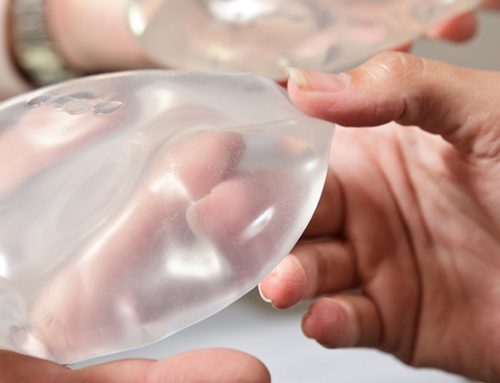Most of our life choices carry a certain amount of risk. Each time we get behind the wheel of the car or sign a form allowing our child to participate in sports, we accept a basic level of risk. We do this because we feel the reward outweighs the potential downside. When choosing to have a plastic surgery procedure, we do the same thing. All surgeries carry the risk of complications, but we choose the path that makes the most sense based on our goals, lifestyle, and comfort with risk.
Most of the more common complications associated with cosmetic procedures are relatively mild and can be avoided with proper preparation before surgery and care after surgery. But occasionally a rare complication arises that has more serious repercussions. In the case of breast implants, Breast Implant Associated Anaplastic Large Cell Lymphoma (BIA-ALCL) is one of those rare complications.
BIA-ALCL has predominantly occurred in patients who have, or at one time had, textured breast implants. Reports of the disease developing in patients who have only had smooth implants lack adequate patient history for confirmation, but even so, the unconfirmed reports make up a tiny fraction of the cases.
This unusual cancer is a cancer of the immune system (called a lymphoma) not a cancer of breast tissue itself. It occurs in people without implants but is exceedingly rare. Why it can develop around a breast implant not clear, but it is thought to be related to how a person’s immune system reacts to the implant surface, specifically a textured-surface implant. It typically occurs within the natural scar tissue (capsule) that forms around the implant but can develop as a mass within the breast.
According to the FDA, BIA-ALCL has been reported 457 times in association with breast implants since 2010, but it appears that some of these reports are duplicates. Either way it is quite a rare complication. In fact, the risk of developing the disease for women with textured implants is somewhere from 1 in 3,817 to 1 in 30,000. For perspective, the overall risk of developing breast cancer due to all causes is one in nine. Even though the numbers are small, the association with breast implants is clear. Most cases are caught early and cured with the removal of the implant and the scar tissue surrounding it. Three-year disease survival is reported to be 93 percent. More advanced cases with cancer spread have been reported, and these cases do require chemotherapy. The nine reported deaths in the US from the disease occurred in patents who did not receive these recommended treatments.
We first updated you on BIA-ALCL in 2017, when the FDA announced the association between breast implants and the cancer had been identified. More recently, the FDA has addressed primary care physicians about the issue. As most women don’t see a plastic surgeon for routine health care, it is more likely to be a primary care physician (PCP) who will detect a lump or other change in the breast. This means PCPs must be aware of the special attention a woman with breast implants requires when providing her ongoing care.
As a patient, it pays to be proactive as you think about potential complications of breast implants. Below you will find concrete actions you can take that will give peace of mind about choosing a procedure and living with the results for years to come.
- Prior to surgery, discuss all possible complications with your plastic surgeon, including the possibility of BIA-ALCL. Compare the risks and benefits of different types of surgeries and implants to make the decision that is right for you. If your surgeon isn’t up front about potential risks, he or she is not the right surgeon for you.
- Do everything your surgeon recommends to prepare for a successful surgery – quit smoking, exercise, eat a well-balanced diet, and limit your alcohol intake.
- After surgery, strictly follow the post-operative instructions your surgeon provides for you.
- Have a frank discussion with your PCP about your breast implants and ask them to brush up on the latest research on BIA-ALCL. You might even share the FDA letter with them to be sure you are on the same page. Follow-up with them as recommended so they are able to detect any changes over time.
- The most common symptoms of BIA-ALCL are the development of fluid (seroma) around the implant several years after surgery, lumps, swelling or pain within the breasts. If you have any concerns at all about your breast implants, always contact your surgeon. He or she is in the best position to evaluate any symptoms that are bothering you.
If you are thinking about getting breast implants or have concerns about the implants you already have, Dr. Slack is your best local resource. Not only is he a member of the American Society of Plastic Surgeons, he completed a fellowship in breast surgery at Georgetown University Hospital in Washington D.C. He would like to discuss your questions with you and help provide a clear view of the risks and benefits of any procedure you choose. Contact our Collin County office to schedule a consultation.




